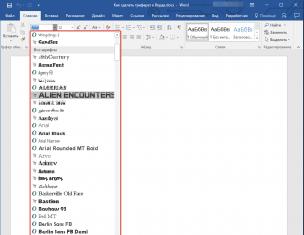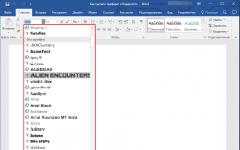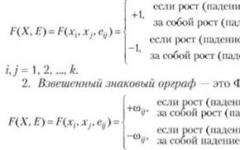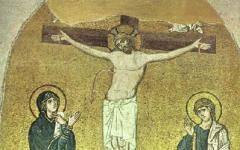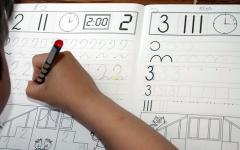ДОКЛАД
На тему: «Trafalgar Square. Трафальгарская площадь»
Приготовил: Грязнов Саша
5 класс
2018 год
Трафальгарская площадь
Это один из центров Лондона. Площадь была названа Трафальгарской в ознаменование исторической морской победы английского флота под командованием Горацио Нельсона над смешанном франко-испанским флотом под командованием Вильнева 21 октября 1805. Битва произошла у мыса Трафальгар в устье пролива Гибралтар и продолжалась несколько часов. Нельсон был смертельно ранен выстрелом, который раздробил его позвоночник. Он умер на борту своего флагмана "Виктория", но не раньше, чем ему сказали, что он выиграл бой.
Колонна Нельсона, со статуей Адмирала лорда Нельсона на вершине, возвышается в центре Трафальгарской площади. Это самый впечатляющий памятник, он 170 футов (около 52 метра) высотой. Статуя Нельсона, стоит лицом к морю, которое он так любил, и её высота около 17 футов (более 5 м).
К северо-востоку от Трафальгарской площади находится здание, где находится Национальная галерея искусств - одна из наиболее важных художественных галерей в мире, а позади Национальная портретная галерея.
Очень часто площадь становится местом для встреч, и толпы лондонцев собираются здесь в случае политических дебатов. Таким образом, можно сказать, что Трафальгарская площадь это сердце, биение которого передаётся всем лондонцам.
На площади много голубей, и жители Лондона любят их кормить. Всем известно, что голубь является символом мира во всем мире.
Trafalgar Square
This is one of the nerve-centres of London. It was named Trafalgar Square to commemorate the historical naval victory won on the 21st of October 1805 by the British fleet under the command of Horatio Nelson over the combined French-Spanish fleet commanded by Villeneuve. The battle took place at Cape Trafalgar in the mouth of the Straits of Gibraltar and lasted several hours. Nelson was fatally wounded by a shot which broke his backbone. He died on board his flagship the Victory, but not before being told that he had won the battle.
Nelson"s Column, with the statue of Admiral Lord Nelson on top, rises in the centre of Trafalgar Square. This most impressive monument is 170 feet (about 52 m) tall. The statue of Nelson, placed facing towards the sea he loved, measures 17 feet (more than 5 m) in height.
To the north-east of Trafalgar Square there is the building that houses the National Gallery of Art - one of the most important Art Galleries in the world - and behind is the National Portrait Gallery.
Quite often the square becomes the location for meetings and in it crowds of Londoners congregate to celebrate political rallies. So it can be said that Trafalgar Square is the heart from which the beat is emitted to all the Londoners.
There are many pigeons in the square and Londoners like to feed them. Everybody knows that the dove is the symbol of peace all over the world.


This is one of the nerve-centres of London. It was named Trafalgar Square to commemorate the historical naval victory won on the 21st of October 1805 by the British fleet under the command of Horatio Nelson over the combined French-Spanish fleet commanded by Villeneuve. The battle took place at Cape Trafalgar in the mouth of the Straits of Gibraltar and lasted several hours. Nelson was fatally wounded by a shot which broke his backbone. He died on board his flagship the Victory, but not before being told that he had won the battle.
Nelson"s Column, with the statue of Admiral Lord Nelson on top, rises in the centre of Trafalgar Square. This most impressive monument is 170 feet (about 52 m) tall. The statue of Nelson, placed facing towards the sea he loved, measures 17 feet (more than 5 m) in height.
To the north-east of Trafalgar Square there is the building that houses the National Gallery of Art - one of the most important Art Galleries in the world - and behind is the National Portrait Gallery.
Quite often the square becomes the location for meetings and in it crowds of Londoners congregate to celebrate political rallies. So it can be said that Trafalgar Square is the heart from which the beat is emitted to all the Londoners.
There are many pigeons in the square and Londoners like to feed them. Everybody knows that the dove is the symbol of peace all over the world.
Трафальгарская площадь
Это один из центров Лондона. Площадь была названа Трафальгарской в ознаменование исторической морской победы английского флота под командованием Горацио Нельсона над смешанном франко-испанским флотом под командованием Вильнева 21 октября 1805. Битва произошла у мыса Трафальгар в устье пролива Гибралтар и продолжалась несколько часов. Нельсон был смертельно ранен выстрелом, который раздробил его позвоночник. Он умер на борту своего флагмана "Виктория", но не раньше, чем ему сказали, что он выиграл бой.
Колонна Нельсона, со статуей Адмирала лорда Нельсона на вершине, возвышается в центре Трафальгарской площади. Это самый впечатляющий памятник, он 170 футов (около 52 метра) высотой. Статуя Нельсона, стоит лицом к морю, которое он так любил, и её высота около 17 футов (более 5 м).
К северо-востоку от Трафальгарской площади находится здание, где находится Национальная галерея искусств - одна из наиболее важных художественных галерей в мире, а позади Национальная портретная галерея.
Очень часто площадь становится местом для встреч, и толпы лондонцев собираются здесь в случае политических дебатов. Таким образом, можно сказать, что Трафальгарская площадь это сердце, биение которого передаётся всем лондонцам.
На площади много голубей, и жители Лондона любят их кормить. Всем известно, что голубь является символом мира во всем мире.
Before Trafalgar Square was laid out in Victorian times it was the site of the old Royal Mews, or stables. Hunting falcons were once kept there. The Square was named to commemorate Admiral Lord Nelson’s naval victory over the French at Trafalgar in 1805. Today it is a place where people meet, and is a site famous for political demonstrations.
Nelson’s Column
The Square’s most famous landmark is Nelson’s Column. There are four bronze lions around it, modeled by the artist Sir Edwin Landseer. They were cast from the cannon of battleships. Every October 21st there is a service under the column to commemorate Nelson. A few days before Nelson’s statue was erected fourteen stonemasons held a dinner on top of the column. Before the statue was hoisted up it was put on show to the public. It was never come down since; people climb up the column to clean and restore it.
Nelson’s statue is over 5m high, that about three times his real height. The statue shows Nelson with one arm and one eye. He lost them in battle. The column is a copy of one from a temple in Rome. It is 51m high. Brass relieves around the bottom show battle scenes. They were cast from captured French cannon. Thousands of pigeons congregate in Trafalgar Square. In summer you can buy birdseed to feet them.
Sights in the Square
George the Fourth’s statue. Around the Square there are many statues. One of them shows George the Fourth on horse back. He chose the pose himself and made it very heroic – he is riding in Roman costume, bareback and without stirrups.
Charles the First’s statue. A statue of the Charles the First on horseback looks down Whitehall. During the Civil War it was sold to a brazier to melt down. But he hid it in his garden and produced it again when the monarchy returned.
The Police Box. In a corner of the Square there is a small hollow pillar, built as an observation post for one policeman. It is London’s smallest police office. The lamp on top is said to come from Nelson’s flagship Victory.
The Standards of Length. On the north wall a brass plaque shows the British Imperial standards of length. Mileages from London are traditionally measured from behind Charles the First’s statue.
Saint Martin-in-the-Fields. The church of Saint Martin-in-the-Fields is on the north-east side of the Square. It was built in 1721, and many wooden churches in America, particularly in New England, are copies of it. It is famous for lunchtime concerts. Nell Gwynn and the furniture marker Thomas Chippendale are buried there.
Eleanor’s Cross. In the nearby Stand, by Charing Cross Station, you can see Eleanor’s Cross. The original one was erected by Edward the First in memory of his wife Eleanor. It marked the last resting place of her funeral procession before it reached Westminster Abbey in 1291. Today’s cross is a Victorian version.
Celebrations
Every year Norway sends Britain a huge Christmas tree, as thanks for wartime help. It stands in the Square from mid-December, when the Ambassador of Norway switches on the lights. Carols are sung around it every evening until Christmas. On New Year’s Eve people go to Trafalgar Square to hear the mid-night chimes of Big Ben.
(No Ratings Yet)Трафальгарская площадь - гордость жителей Лондона. Это место является центром Вестминстера и связывает между собой три главные улицы. Оно также поражает своим величием и ежегодно собирает толпы туристов, чтобы восхититься этой достопримечательностью. Площадь была основана в 1820 году. Изначально, на ее месте располагались вольеры для королевских соколов. Позже там были построены конюшни, и после того как их снесли, местные власти решили создать огромную площадь. Цель этого проекта была благоустроить город, и предоставить людям место для культурного отдыха.
Площадь была названа в честь морской Трафальгарской битвы на этом месте, которой руководил адмирал Горацио Нельсон. В память об этом выдающемся человеке на площади была воздвигнута колона с гранитным монументом Нельсона на вершине. Высота колоны 56 метров. У подножья установлены огромные четыре льва из бронзы.
Помимо памятника Нельсону, остальное пространство включает в себя немало других интересных сооружений. Это скульптуры великих людей, сыгравших значимую роль в истории Англии, величественные фонтаны, две Национальные галереи которые хранят в себе около 2300 картин, церковь Святого Мартина.
Трафальгарский сквер окружен множеством дорог, а его центр является основной транспортной развязкой. Движение транспорта в час пик интенсивно растёт. Но в последнее время количество машин сократилось, в целях безопасности пешеходов, и тех, кто приходит туда отдыхать.
Много лет назад Трафальгарская площадь была пристанищем диких голубей, они слетались отовсюду, туристы и местные граждане любили их подкармливать. Но вскоре было признано, что голуби оставляют после себя много грязи, и портят каменные сооружения. В 2000 году власти запретили продавать корм для птиц, но люди все равно продолжали их кормить. И тогда ввели запрет на кормление, и наказание в виде денежного штрафа, для тех кто ослушался. Со временем голуби стали исчезать и сейчас уже практически не прилетают.
Трафальгарский сквер с момента создания, стал традиционным местом как для митингов и пикетов, так и для праздничных гуляний и фестивалей. Каждый Новый Год жители встречают собираясь на площади, где всякий раз устанавливается праздничная елка Великобритании.
Перевод
Trafalgar Square is the pride of the inhabitants of London. This place is the center of Westminster and connects the three main streets. It also amazes with its greatness and annually gathers crowds of tourists to admire this landmark. The square was founded in 1820. Initially, in its place were aviaries for royal falcons. Later, there were built stables, and after they were demolished, local authorities decided to create a huge area. The purpose of this project was to beautify the city, and to provide people with a place for cultural recreation.
The square was named after the naval Battle of Trafalgar on this site, which was led by Admiral Horatio Nelson. In memory of this outstanding man, a column with a granite monument of Nelson on the summit was erected on the square. The height of the column is 56 meters. Four huge lions of bronze are installed at the foot.
In addition to the monument to Nelson, the rest of the space includes many other interesting buildings. These are sculptures of great people who played a significant role in the history of England, majestic fountains, two National Galleries which hold about 2300 paintings, the Church of St. Martin.
Trafalgar Square is surrounded by many roads, and its center is the main traffic junction. The movement of traffic is intensively growing during the peak hours. But recently the number of cars has decreased, for the safety of pedestrians, and those, who come there for resting.
Many years ago Trafalgar Square was a haven of wild pigeons, they flew everywhere, and tourists and local citizens liked to feed them. But soon it was recognized that the pigeons leave a lot of mud after themselves, and spoil the stone structures. In 2000, the authorities banned the sale of feed for birds, but people still continued to feed them. And then they introduced a ban on feeding, and punishment in the form of a fine for those who violated the ban. Over time, the pigeons began to disappear and now almost do not arrive.
Trafalgar Square, set in central London, is one of Britain"s great tourist attractions. A visit to the capital would be incomplete without going to marvel at Nelsons Column and the four giant lions at its base, or to admire the lovely splashing fountains and to feed the pigeons, who have made their home here. Built to commemorate Admiral Nelson, the square was named after the Spanish Cape Trafalgar where his last battle was won.
It was John Nash, who designed the first layout of the square in the 1820"s. Although he didn"t live to see its completion, his Neo-classical design was adhered to, achieving the unified effect of the beautiful buildings we admire today. Building of the square began in 1829 and was still being developed into the 1840"s.
The National Gallery occupies the north side of the square. In the stone under the balustrade, you can see the Imperial Standards of Length (1 foot, 2 feet, 1 yard etc.).
On the east side is South Africa House, with African animals featured on the stone arches. Sir Robert Smirke, who designed The British Museum, also created Canada House, on the west side. Now open to the public, Canada House is worth a visit to enjoy the original classical interior, and to see the interesting changing exhibitions on view. Visiting Canadians may be interested to know that they can read the Canadian newspapers, browse on line, or send and receive emails in Canada House.
The chartists assembled in Trafalgar Square in 1848 and since then, it has been a favourite meeting place for demonstrators and marchers, trying to gain attention for their cause.
Each year in December, the people of Norway send a gift of an enormous Christmas Tree to Britain, which is erected in Trafalgar Square. This is in thanks for Britain"s part in their liberation during the second world war. One of the unforgettable sights of London is to see the giant tree after dark, when it is lit by hundreds of twinkling fairy lights, carol singers grouped around, while floodlights illuminate the sparkling water in the fountains of the square. This picture is depicted on many Christmas cards, sent all over the world each year.
The equestrian statue of Charles I at the south end of the square is noteworthy, as being the original site of Charing Cross. This is the spot from which all "distances from London" are measured. Edward I erected a cross here in 1290, the last of twelve marking the resting places of the funeral cortege of his wife Eleanor as it made its way from Nottinghamshire to Westminster Abbey. The cross remained on this spot, until its removal during the civil war in the mid 17th century. A replica was placed in the forecourt to Charing Cross Station two centuries later.
Surrounding Nelson are statues of other distinguished men. On either side, are the bronze statues of Sir Henry Havelock and Sir Charles James Napier both Victorian major generals. Fronting the north wall are busts of Beatty, Jellicoe and Cunningham all famous military leaders. In the north east corner, is a statue of George IV on horseback, commissioned by him, while in the opposite corner the pedestal does not yet have a permanent statue.



